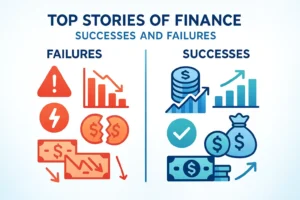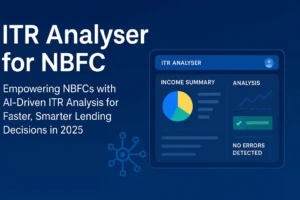When you hear the term financial statements, what comes to mind? Rows of numbers, complicated jargon, or perhaps something only accountants understand? Don’t worry; you’re not alone. But financial statements are more than just numbers—they’re the story of a business, told in the universal language of finance.
Whether you’re running a business, investing your hard-earned money, or simply curious about how companies operate, understanding financial statements can be a game-changer. Let’s break financial statements guide all down into simple, relatable terms.
Introduction to Financial Statements
Imagine planning a road trip. You check the fuel gauge, map out the route, and ensure your car is in good condition. Financial statements are the business equivalent of this prep—they give you a clear picture of where the business stands and where it’s headed.
Think of them as a health report for businesses. They summarize what a company owns, what it owes, and how it’s performing. And just like you wouldn’t embark on a long journey without checking your car, no business or investor should make decisions without referring to these statements.
Why Financial Statements Matter
Financial statements aren’t just paperwork; they’re essential tools that can shape the future of businesses and the people connected to them. Here’s why:
- They Guide Decisions: Whether it’s expanding into new markets or cutting unnecessary expenses, these statements help businesses make informed choices.
- They Build Trust: Transparent financial statements show investors, employees, and customers that a company has nothing to hide.
- They Track Progress: Imagine checking your fitness tracker after a month of working out—it feels good to see results. Similarly, businesses use financial statements to measure growth.
- They Ensure Compliance: Regulators use these statements to verify that businesses are playing by the rules.
Take, for example, a small café owner who wants to open a second branch. By analyzing their financial statements, they can decide if they can afford the expansion or need a loan.
Who Relies on Financial Statements?
The audience for financial statements is wider than you might think:
- Investors: They want to know if a company is worth their money.
- Banks and Creditors: Before lending money, they check if the business can pay it back.
- Managers: They use the data to plan budgets, improve operations, and set goals.
- Government Regulators: They ensure businesses are paying taxes and following the law.
- Employees: A financially stable company means job security for its workers.
Imagine this: You’re applying for a loan. The bank asks for your credit score to understand your financial habits. Businesses do the same with these statements to prove their credibility.
What Makes Up a Financial Statement?
A financial statement is like a recipe—it has specific ingredients that come together to tell a story. These are the key elements:
- Assets: What the business owns (cash, buildings, equipment).
- Liabilities: What the business owes (loans, unpaid bills).
- Equity: The owner’s stake in the business.
- Revenue: The money earned from selling products or services.
- Expenses: The costs of running the business.
For example, think of a small bakery. Its assets include ovens and ingredients, liabilities might be a loan for the kitchen equipment, and revenue comes from selling cakes and pastries.
What’s the Purpose?
Financial statements aren’t just for show; they have clear objectives:
- Providing Clarity: They offer a detailed snapshot of the company’s financial health.
- Driving Better Decisions: Data from these statements helps businesses and investors plan wisely.
- Enabling Comparisons: You can compare performance over time or against competitors.
- Fulfilling Legal Obligations: Businesses are required to keep accurate records for tax and legal purposes.
During uncertain times, like a global pandemic, financial statements become lifelines. They help businesses allocate resources, cut costs, and survive tough conditions.
Types of Financial Statements (With Real-Life Examples)
There are four main types of financial statements, each answering different questions about the business:
-
Income Statement (Profit & Loss Statement)
Question: Is the business making money?
Example: A clothing store’s income statement shows its total sales, cost of inventory, and net profit. -
Balance Sheet
Question: What does the company own and owe?
Example: A tech startup’s balance sheet lists its office equipment (assets) and venture capital (equity). -
Cash Flow Statement
Question: How is cash moving in and out?
Example: An e-commerce platform uses this to ensure they have enough cash to pay suppliers during the holiday season.
Statement of Changes in Equity
Question: How has the owner’s stake changed?
Example: When a business raises funds, this statement shows the increase in shareholder equity.
Wrapping It Up
Financial statements might seem intimidating, but they’re actually like a business’s diary—capturing its highs and lows, strengths and weaknesses. Whether you’re an entrepreneur plotting your next move, an investor seeking the next big opportunity, or an employee curious about your company’s future, these documents hold valuable insights.
The next time you come across a financial statement, don’t just skim through it. Dive in, and you’ll find the story of a business—told through numbers, but rich in meaning.
Ready to simplify financial analysis? Book a demo with ProAnalyser, the ultimate bank statement analyser tool, and take control of your financial insights today!



